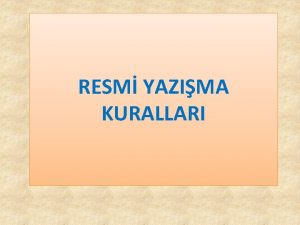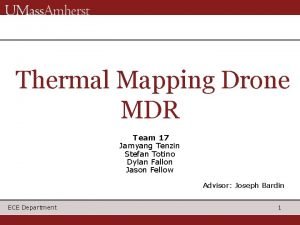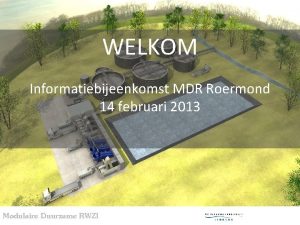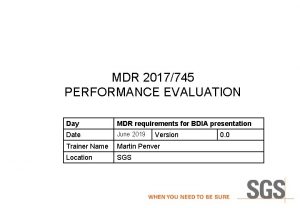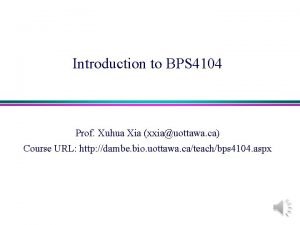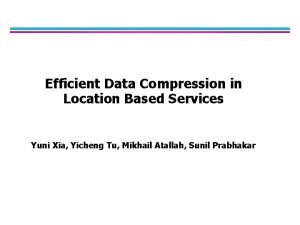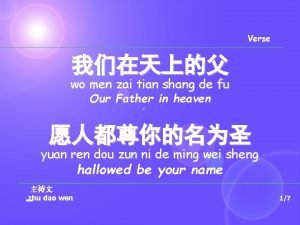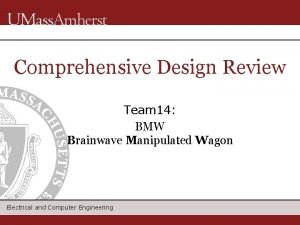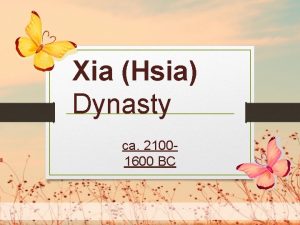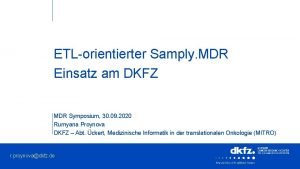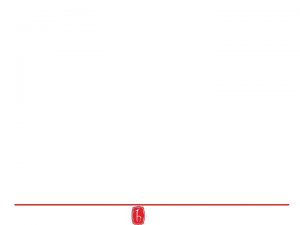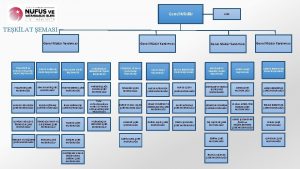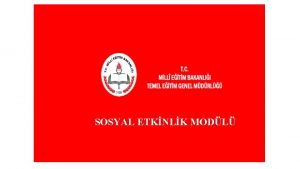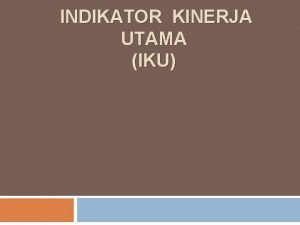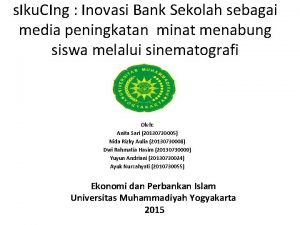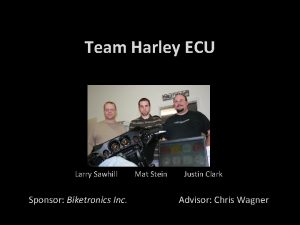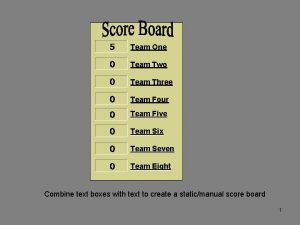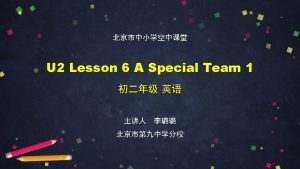IKU ECU Team 17 Advisor Professor Xia MDR




















- Slides: 20

IKU ECU Team 17 Advisor: Professor Xia MDR Presentation 12/09/2019 1

Team 17: IKU ECU Takuya Seaver EE Jack Walter CSE Xueteng Qian CSE Yongjie Yang EE 2

Problem Statement ● An Electronic Control Unit, ECU, is the brain of fuel injection in a vehicle. ● By optimizing the functionality of an ECU, gas mileage can be improved thus reducing the amount of carbon emissions released into the air. “Climate Change: Atmospheric Carbon Dioxide: NOAA Climate. gov, ” Climate Change: Atmospheric Carbon Dioxide | NOAA Climate. gov, 19 -Sep-2019. [Online]. Available: https: //www. climate. gov/news-features/understanding-climate/climate-changeatmospheric-carbon-dioxide. [Accessed: 08 -Dec-2019]. 3

Our Solution 4

Block Diagram 5

Requirements & Specifications ●Real-time processing of input data signals for correct fuel injection ●Feedback capabilities with O 2 sensor for optimization ●Support up to 6000 RPM ●Ability to inject correct amount of fuel within ~10 ms ●Ability for user to optimize the system (modify lookup table, equations, etc. ) ●Calculate fuel map value within 2 rotations of the crankshaft (10 ms) ●Store input data 6

System Topology Synthesized Signals (Arduino and Potentiometers) MCU (ATtiny 817) Level Shifter and Fuel Injector Driver Synthesized Signals: Takuya Seaver and Jack Walter MCU: Xueteng Qian and Jack Walter Level Shifter and Fuel Injector Driver: Yongjie Yang and Takuya Seaver Fuel Injector 7

MDR Deliverables ❑Step 1: Correctly synthesize engine sensor signals. ❑Step 2: Calculate pulse width time based on input data calculations and lookup table values. ❑Step 3: Inject the correct amount of ”fuel”. 8

Synthesized Input Signals (TK and Jack) • Arduino program created to mimic the functionality of the crankshaft position sensor. • Potentiometers used to be able to act as the acceleration (to control speed), emulate the MAP sensor signal, and act as a thermistor to simulate our IAT sensor signal. • Communication through ADC input terminals on the microcontroller to be able to modify the input signals and compare with lookup table. 9

ECU Software and Lookup Table (Xueteng and Jack) • Measure interval between two rotation from CKP signal to calculate • RPM = 60*100/interval. • Measure intake air pressure and temperature • Use to calculate load of engine Load = 100*MAP/(IAT) • Use RPM and Load to find output pulse width in the lookup table. 10

Lookup Table 11

Voltage Level Shifter (Yongjie) Input: 1. ECU output signal: 2. Simulating Input frequency around 6000 rpm (100 Hz) ---(1 RPM = 1/60 Hz) 1. Simulating Input rectangular wave (High: 3. 3 V, Low: 0 V) Output: 1. Output rectangular wave (High: 12 V, Low: 0 V) 1. Same pulse width as input 12

Fuel Injector The control signal is from ECU, when the voltage of control wire is LOW (0 V), the injector will inject fuel, and when the control signal voltage is HIGH (12 V), then the injector will be closed and not inject fuel. Technical Specifications: 1. Control signal wire pin: Driver wire Power wire pin : Power Supply (12 V DC) 2. Driver current: ~800 m. A @12 V 3. Coil resistance: 12~14. 5 ohm 13

Level Shifter and Driver Schematic and Test NMOS (2 N 5486): ● High drain voltage 25 V NPN Bipolar Transistor (mpsa 05): ● High collector voltage 60 V ● Low noise NPN Bipolar Transistor (TIP 122): ● High collector current 5 A 14

Test (Fuel Injector) 15

How did it turn out? ✓ Step 1: Correctly synthesize engine sensor signals. ✓ Step 2: Calculate pulse width time based on input data calculations and lookup table values. ✓ Step 3: Inject the correct amount of ”fuel”. 16

Proposed CDR Deliverables 1. 2. 3. 4. 5. Integration of real engine components. Speed of processing of real engine input signals. Optimization of code and hardware to get closer to a real use case. Math/Physics for the LUT (e. g. , equation, then to analog computing). Training and Testing of both hardware and software with documentation. 17

Gantt Chart 18

Questions? 19

Demo 20
 Promotion from assistant to associate professor
Promotion from assistant to associate professor Ieee format report
Ieee format report Mdr uzun yazılışı
Mdr uzun yazılışı Feed.php?mdr=
Feed.php?mdr= Mdr transition
Mdr transition Mdr roermond
Mdr roermond Sgs mdr designation
Sgs mdr designation 2017745
2017745 Mdr suicidaal gedrag
Mdr suicidaal gedrag Sgs mdr designation
Sgs mdr designation European commission mdr
European commission mdr Mdr iso 13485
Mdr iso 13485 Xỉa cá mè đè cá chép
Xỉa cá mè đè cá chép Xuhua xia
Xuhua xia Yuni xia
Yuni xia Tian shang tian xia wei wo du zun
Tian shang tian xia wei wo du zun Qiangfei xia
Qiangfei xia Amy xia amgen
Amy xia amgen Xia (hsia) dynasty
Xia (hsia) dynasty Red ning contra
Red ning contra Dinastiyang sui tagalog
Dinastiyang sui tagalog


